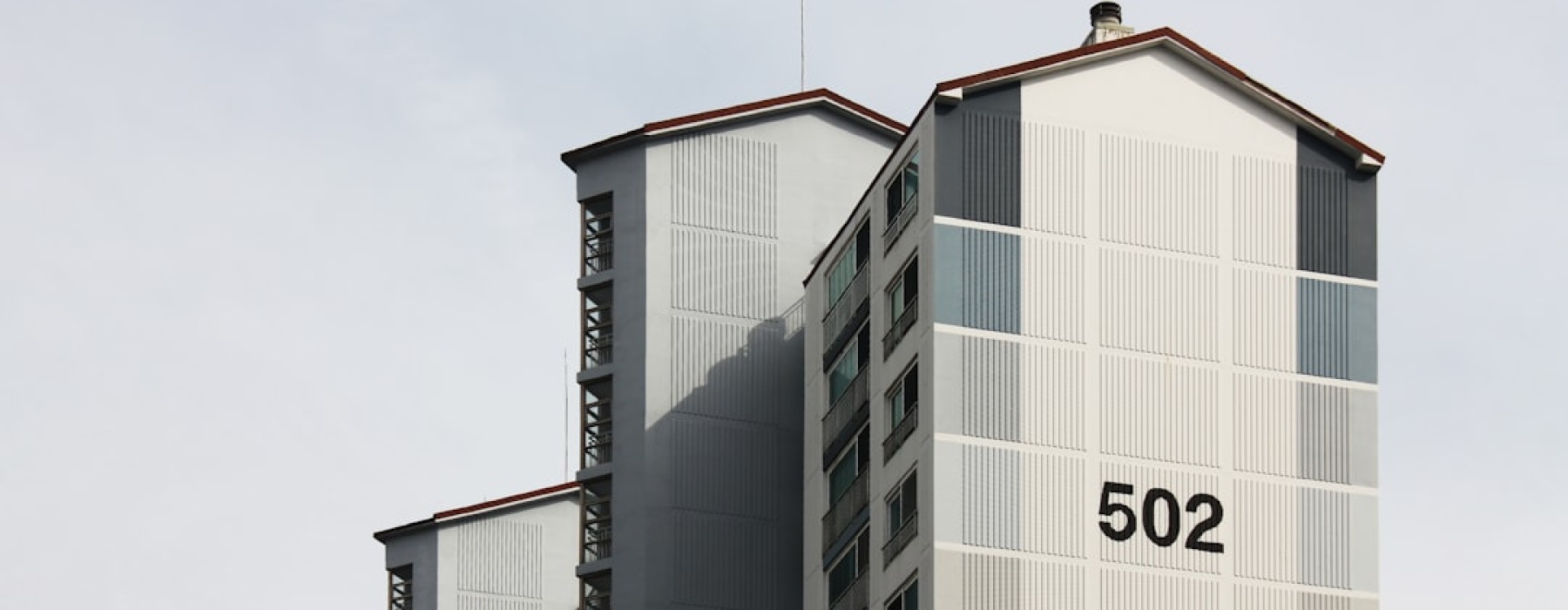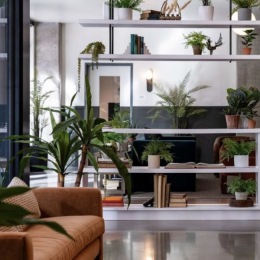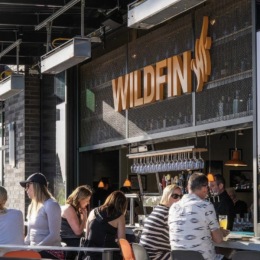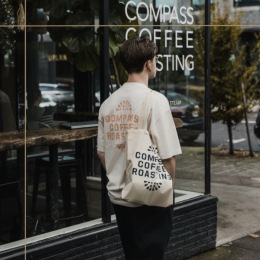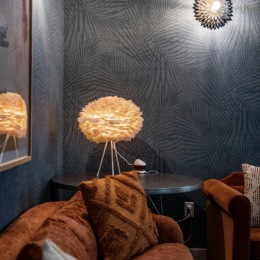Why Industrial Style Apartments Are Taking Over Urban Living
Industrial style apartments near me have become a popular trend in urban housing, changing former factories and warehouses into stunning modern homes. These unique spaces offer something you won't find in traditional apartments: soaring ceilings, exposed brick walls, and an open canvas for your personal style.
Quick Answer: Finding Industrial Style Apartments
- Search terms: Use "hard loft," "warehouse conversion," or "industrial loft" on rental sites
- Best locations: Historic downtowns, former manufacturing districts, design neighborhoods
- Key features: 14-16 foot ceilings, exposed brick, large factory windows, open floor plans
- Average size: 1,000-2,000+ square feet (much larger than typical 400-600 sq ft studios)
- What to expect: Unique energy considerations, limited storage, amazing natural light
The appeal is obvious. As one Minneapolis resident put it: "The soaring ceilings and huge windows make every day feel inspiring—I've never lived anywhere that felt so open and full of character."
These apartments started as artist havens in 1960s Manhattan but have evolved into coveted luxury housing across cities nationwide. Whether you're drawn to authentic warehouse conversions with original exposed beams or newer "soft lofts" that mimic the industrial aesthetic, these spaces offer creative freedom that traditional apartments simply can't match.
The trade-offs are real though. You'll likely have different heating and cooling needs, deal with sound travel in open spaces, and get creative with storage solutions. But for many renters, the unique character and spacious feel are a welcome trade-off.
What Makes an Apartment "Industrial Style"?
When you're searching for industrial style apartments near me, you're looking for something that captures the raw beauty of old factories and warehouses. This distinctive style has its roots in 1960s New York City, where creative folks found that abandoned industrial buildings made incredible homes. What started as a practical solution for artists has become one of the most sought-after apartment styles in cities everywhere.
The magic of industrial design lies in celebrating what most apartments try to hide. Instead of covering up structural elements, industrial spaces put them on full display. That "unfinished" look you see? It's completely intentional—and it's what gives these apartments their unmistakable character and charm.
The Look and Feel: Key Architectural Features
Walking into a true industrial apartment feels different from the moment you step inside. The exposed brick walls immediately catch your eye, adding warmth and telling the story of the building's past. These aren't just decorative—they're the original bones of former factories and warehouses.
Then there are those soaring ceilings that make you look up in wonder. We're talking 14 to 16 feet of vertical space that makes even smaller apartments feel absolutely massive. Combined with those expansive factory windows—sometimes stretching 10 feet tall—you get floods of natural light that traditional apartments simply can't match.
The open-concept living is where industrial apartments really shine. Forget about tiny, compartmentalized rooms. These spaces flow seamlessly from living area to kitchen to bedroom, giving you a blank canvas to create your own zones. As one resident honestly noted, "If you like privacy when it comes to being in bed, this isn't the apartment for you"—but that openness is exactly what draws people to loft living.
Look up, and you'll see visible pipes and ductwork snaking across the ceiling. Rather than hiding these functional elements, industrial design makes them part of the aesthetic. The same goes for those sturdy steel beams and wooden joists that showcase the building's robust construction.
Your feet will likely touch polished concrete floors or beautiful reclaimed wood planks—both durable enough to handle the daily wear of urban living while adding to that authentic industrial vibe. Even the lighting fixtures tend toward metal designs with exposed bulbs, keeping everything consistent with that functional-meets-beautiful approach.
These elements work together to create spaces that prioritize character and visual impact over traditional efficiency—and that's exactly the point.
Types of Industrial Style Apartments
Not all industrial style apartments near me offer the same experience. The market breaks down into two distinct categories, each with its own personality and perks.
Hard lofts are the real deal—authentic conversions of former factories, warehouses, and other industrial buildings. These spaces keep their original character features like genuine exposed brick, concrete floors, and those massive factory windows that have been there for decades. You might find yourself living in a converted piano factory or former textile mill, complete with the rustic charm and historical quirks that come with age. These apartments often feel like living in a piece of history, with authentic structural elements that can't be replicated.
Soft lofts take a different approach, offering newly constructed apartments designed to capture that industrial aesthetic. While they feature high ceilings (usually around 10-12 feet), open floor plans, and exposed concrete, they lack the genuine historical elements of their older counterparts. What they miss in authenticity, they make up for in modern conveniences—think state-of-the-art appliances, contemporary finishes, and all the amenities you'd expect from new construction.
Both options deliver that coveted open-concept living experience, but the choice often comes down to whether you want authentic history with potential quirks, or modern comfort with industrial-inspired design.
The Pros and Cons of Loft Living
Living in an industrial style apartments near me is more than just choosing a place to sleep—it's embracing a completely different way of life. These spaces have a magnetic pull that draws people in, but they also come with their own unique set of challenges that traditional apartment dwellers may not face.
The reality is that loft living isn't for everyone. While some residents describe the "magic" and "magnetism" of their spaces in glowing terms, others find the open-concept lifestyle takes some serious adjustment. Understanding both sides of the coin will help you decide if this urban living experience matches your lifestyle.
The Benefits of an Open, Industrial Space
There's something undeniably captivating about walking into a loft for the first time. That moment when you see those soaring ceilings and expansive windows often seals the deal for future residents.
Abundant natural light is perhaps the biggest game-changer. Those massive factory-style windows don't just look impressive—they flood your space with sunshine throughout the day. You'll find yourself reaching for the light switch far less often, and your morning coffee tastes better when you're drinking it in a sun-drenched room.
The versatile layouts give you freedom that traditional apartments simply can't match. Without rigid walls dictating how you use every square foot, you become the architect of your own space. Want to rearrange your entire living room on a whim? Go for it. Need to create a temporary workspace for a big project? Easy. As one Minneapolis resident put it, they "fell in love with their loft due to its history in every brick, alongside proper updates."
Unique character sets these spaces apart from cookie-cutter apartments. Every exposed brick wall tells a story, every visible beam speaks to the building's industrial past. You're not just renting an apartment—you're becoming part of a building's ongoing history. This isn't a space that 50 other identical units share the same floor plan with.
The blank canvas aspect excites creative types especially. That raw backdrop of concrete and brick becomes your personal art gallery. "The best thing about decorating my loft was realizing I didn't need to fill every inch of space," shared one resident, highlighting how the vastness actually encourages more thoughtful design choices.
Spaciousness is the final major draw. While typical studios squeeze 400-600 square feet, loft apartments stretch between 1,000-2,000 square feet. You can actually host dinner parties, practice yoga, or simply enjoy the luxury of not bumping into furniture every time you turn around.
Practical Considerations Before You Move In
However, there are practical considerations to keep in mind. Those soaring ceilings and expansive windows that make lofts so appealing also create some practical challenges you'll want to prepare for.
Energy Consumption is a factor. Those 14-foot ceilings mean more air to heat and cool, and exposed brick offers less insulation than modern drywall. Many residents get creative with ceiling fans, area rugs, and strategic window treatments to manage the indoor climate. It's a factor to consider when planning your living environment.
Sound travel becomes a whole new consideration. Hard surfaces like concrete floors and exposed brick create an acoustic environment where every footstep, conversation, and late-night Netflix binge can echo. The open floor plan means sounds from your kitchen might wake up your sleeping area. During apartment tours, try clapping your hands to get a sense of how sound bounces around the space.
Storage solutions require creativity since most lofts skip traditional closets entirely. You'll become best friends with freestanding wardrobes, stylish shelving units, and furniture that pulls double duty with hidden storage compartments. The good news? Storage solutions can become part of your decor rather than something to hide.
Creating zones in all that open space takes some planning. Without walls naturally defining your living room, bedroom, and dining area, you'll need to use furniture placement, area rugs, and lighting to create distinct spaces. Large bookshelves work beautifully as room dividers while maintaining that open feel.
Maintenance in older converted buildings sometimes involves unique challenges. Ask about maintenance responsibilities during your tour—some building systems in converted warehouses have quirks that newer construction doesn't deal with.
The privacy factor deserves honest consideration. If you're someone who needs complete separation between sleeping and living spaces, the open-concept lifestyle might feel too exposed. As one London loft owner noted, "If you like privacy when it comes to being in bed, this isn't the apartment for you."
Despite these challenges, most loft residents find that the unique character and expansive feel far outweigh the practical considerations. It comes down to your personal lifestyle and what you value most in a living space. The key is going in with realistic expectations and a plan for addressing the challenges that matter most to you.
How to Find Industrial Style Apartments Near Me
The hunt for the perfect industrial style apartments near me is like a treasure hunt through your city's history. These unique spaces aren't scattered randomly throughout urban areas—they cluster in neighborhoods that tell the story of America's industrial past.
Think about it: where would you find old factories and warehouses? They weren't built in quiet suburban streets. They were the beating heart of commerce, positioned along rivers, railways, and in the busy centers of growing cities. Today, these same areas have transformed into some of the most sought-after residential neighborhoods.
Where to Look for Industrial Style Apartments Near Me
Your search for industrial style apartments near me should start with understanding your city's industrial DNA. Every city has neighborhoods that once hummed with manufacturing activity, and these are your goldmines for authentic loft living.
Historic downtowns are often your best starting point. Many cities have breathed new life into their downtown cores, converting old commercial buildings into stunning residential spaces. These areas offer the perfect blend of urban convenience and historical character that makes loft living so appealing.
Warehouse districts and former manufacturing hubs are the obvious champions for converted lofts. Research your city's industrial history—where were the textile mills, printing presses, or food processing plants? Areas that once buzzed with factory workers are now vibrant neighborhoods filled with artists, young professionals, and anyone drawn to unique living spaces.
Don't overlook design districts either. Some cities have designated creative zones that attract modern buildings with industrial aesthetics. These areas often feature newer soft lofts that capture the industrial look with contemporary amenities.
Urban renewal zones represent another opportunity. As cities evolve, old industrial sites frequently transform into mixed-use communities, often incorporating loft-style housing as a cornerstone of their redevelopment plans.
When searching online, your keywords matter tremendously. Beyond "industrial style apartments," try "hard loft," "warehouse conversion," "industrial loft," "loft for rent," or "converted factory apartments." These specific terms will filter your results to properties that truly embody the industrial aesthetic rather than generic apartments.
Specialized real estate agents can be invaluable in larger cities with significant loft markets. Some agents focus exclusively on unique or historic properties, giving you access to listings that might not appear on major rental websites. Local apartment listing sites often have dedicated categories for lofts or unique properties too.
Sometimes the best findies happen on foot. Walking through promising neighborhoods can reveal hidden gems and give you a genuine feel for the area's industrial heritage and current community vibe.
What to Look for During Your Apartment Tour
Once you've identified potential spaces, your apartment tour becomes detective work. You're not just looking at a place to live—you're evaluating a piece of history and determining if it fits your lifestyle.
Building history adds soul to your living experience. Ask about the building's original purpose. Was it a textile factory? A printing press? A piano manufacturer? Understanding this backstory enriches your connection to the space and often reveals fascinating architectural details.
Pay close attention to the quality of conversion. The best renovations preserve original character while ensuring modern comfort. Are the floors solid underfoot? Do the massive windows operate smoothly? Are those exposed brick walls and wooden beams genuinely original, or are they decorative additions trying to mimic the authentic look?
Window condition deserves special scrutiny in loft apartments. Those gorgeous, expansive factory windows are part of the charm, but they can also be energy drains if poorly maintained. Check for drafts, inspect the insulation quality, and test their functionality. Single-pane windows might look authentic, but they can lead to uncomfortable temperature swings and affect energy usage.
Perform a sound insulation check during your visit. Clap your hands loudly, speak at normal volume, and notice how sound bounces around the space. The hard surfaces that make lofts beautiful—concrete, brick, exposed beams—also make them acoustically lively. Ask current residents about noise levels and what solutions they've found helpful.
Discuss included amenities thoroughly. While authentic hard lofts might offer minimal traditional amenities, newer soft lofts often boast impressive feature lists. Confirm what's included with the apartment and what additional services are available.
Energy Usage is a crucial conversation topic. High ceilings and large windows can significantly impact heating and cooling needs. It's a good idea to ask about the building's insulation and window efficiency to understand how the space manages temperature year-round.
Clarify maintenance responsibilities upfront. Historic buildings sometimes have unique maintenance needs, and understanding what falls to residents versus property management prevents future misunderstandings.
Visit at different times of day if possible. Morning light, afternoon heat, and evening privacy levels can vary dramatically in these open, window-filled spaces. This timing strategy helps you understand how the space will actually feel during your daily routine.
The perfect industrial loft is out there waiting for you. With the right search strategy and thorough evaluation process, you'll find a space that combines historical character with modern comfort—creating a truly unique urban living experience.
Frequently Asked Questions about Industrial Lofts
How do industrial lofts differ from traditional apartments?
The moment you step into an industrial loft, you'll immediately notice how different it feels from a traditional apartment. The most obvious difference is the open floor plan - instead of walking into a hallway with doors leading to separate rooms, you're greeted by one large, flowing space where living, dining, and sleeping areas blend together seamlessly.
Size is another major difference. While typical studio apartments squeeze everything into 400 to 600 square feet, loft apartments stretch out over 1,000 to 2,000 square feet. That's a lot more room to spread out, entertain friends, or set up a home office.
The architectural style tells a completely different story too. Traditional apartments hide their "bones" behind finished drywall and dropped ceilings. Industrial lofts celebrate theirs - you'll see exposed brick walls, steel beams, visible ductwork, and concrete floors that give each space its unique character and history.
Storage and privacy work differently in lofts. Traditional apartments come with built-in closets and separate bedrooms that offer natural privacy. In a loft, you'll need to get creative with freestanding wardrobes and room dividers. The open layout means less privacy overall, which can be liberating for some but challenging for others who value quiet, separate spaces.
Are industrial-style apartments a good choice for pet owners?
Industrial-style apartments can be fantastic for pet owners, though you'll want to check each building's specific pet policies before falling in love with a space.
The flooring alone makes lofts pet-friendly winners. Those polished concrete and reclaimed wood floors that give lofts their character? They're practically indestructible when it comes to pet wear and tear. No worrying about scratched hardwood or stained carpet - muddy paws and the occasional accident clean up easily on these durable surfaces.
Your pets will love the open space too. The expansive floor plans give active dogs plenty of room to play and explore, while cats can enjoy the vertical space that high ceilings provide. It's like having a built-in playground right in your living room.
Many modern loft buildings welcome pets and sometimes even include pet-friendly amenities like wash stations. However, converted warehouse buildings might have different policies, so always confirm the building's pet rules and whether there are limits on the number or size of pets allowed.
The industrial districts where many lofts are located often feature new urban parks and green spaces - perfect for daily dog walks and outdoor trips.
What are some tips for decorating an industrial style apartment near me?
Decorating an industrial style apartment near me is like working with a beautiful blank canvas that already has some stunning artwork on it. The key is balancing those raw, structural elements with warmth and personality.
Start by mixing textures to soften the hard edges. Those exposed brick walls and concrete floors are gorgeous, but they can feel cold without some contrast. Layer in plush area rugs, soft throw blankets, and comfortable upholstered furniture to create cozy spots throughout your open space.
Choose furniture that celebrates the industrial aesthetic rather than fighting against it. Look for pieces made from reclaimed wood, distressed metal, and rich leather. A sturdy wooden dining table with metal legs or a vintage leather sofa can anchor your space while staying true to the industrial vibe.
Lighting becomes both functional and decorative in a loft. Oversized pendant lights with metal shades, exposed filament bulbs, or track lighting systems don't just illuminate your space - they help define different zones within your open floor plan and add to the industrial atmosphere.
Large plants bring life and softness to balance all those hard surfaces. A few strategically placed leafy plants can transform the entire feel of your space while improving air quality.
Area rugs are your secret weapon for creating separate "rooms" in an open concept space. Use them to visually distinguish your living area from your dining space or sleeping nook. They also add warmth underfoot and help absorb sound in those high-ceilinged spaces.
Don't forget that those soaring walls are perfect for large-scale art that makes a statement. Choose pieces that complement the industrial backdrop while reflecting your personal style - this is where you can really make the space feel like home.
The goal is creating a space that feels both stylishly raw and comfortably lived-in - celebrating the unique character of your industrial home while making it unmistakably yours.
Your Guide to Finding the Perfect Industrial Loft
Finding the perfect industrial style apartments near me is more than just a housing search—it's about finding a lifestyle that celebrates space, light, and character. These unique homes offer something traditional apartments simply can't: the freedom to live in a space that feels both historic and utterly modern.
The appeal of industrial living is undeniable. You get abundant natural light streaming through those massive factory windows, versatile layouts that adapt to your changing needs, and unique character that tells a story in every exposed brick and steel beam. It's like having a blank canvas where you can create exactly the living space you've always imagined.
It's helpful to be aware of the trade-offs. You'll need to get creative with storage solutions, consider the energy usage due to those soaring ceilings, and think about how sound travels in open spaces. The lack of traditional room divisions means you'll be designing zones rather than decorating separate rooms.
Yet for many residents, these challenges pale in comparison to the daily joy of living in such an inspiring space. As one loft dweller put it, the experience of waking up to 16-foot ceilings and wall-to-wall windows makes every morning feel special.
The Miller Apartments in Vancouver, Washington captures this industrial spirit beautifully. Located in the vibrant Vancouver Waterfront neighborhood, The Miller blends modern design with the city's rich industrial history. You'll find all the character you're seeking—think exposed elements and open concepts—paired with luxury amenities like a day spa, fitness center, and coworking lounge that make daily life both convenient and comfortable.
Whether you're drawn to the authentic history of a converted warehouse or prefer the polished approach of modern industrial-inspired design, your perfect loft is out there. The key is knowing where to look (those former manufacturing districts and historic downtowns), what to search for (try "hard loft" and "warehouse conversion" in your online searches), and what questions to ask during tours.
The journey to finding your ideal industrial-style apartment is exciting because these spaces aren't just about where you live—they're about how you want to live. With their emphasis on wellness and community, spaces like The Miller prove that you don't have to choose between unique character and modern comfort. You can have both, creating a home that's as sophisticated as it is inspiring.
